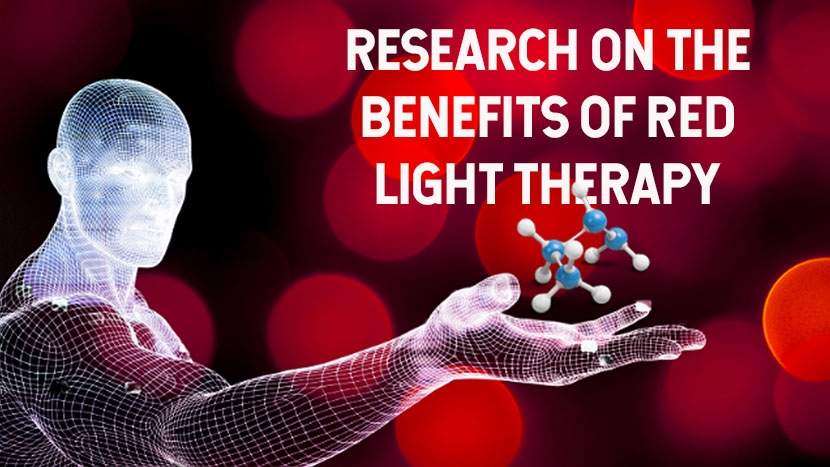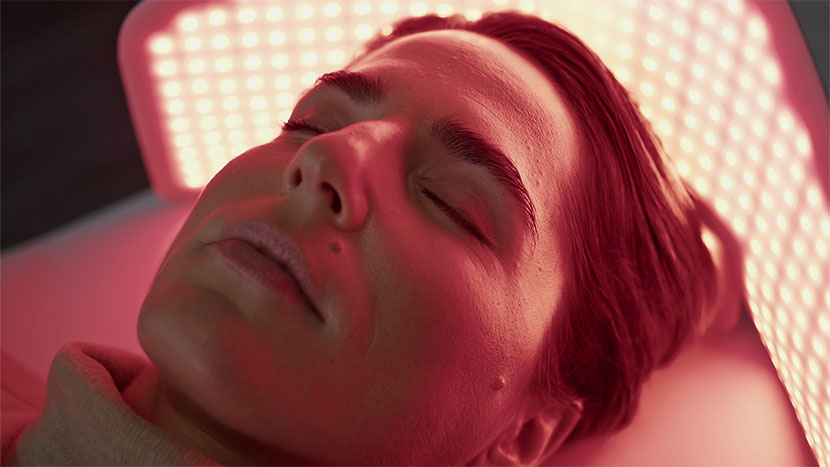Science Behind Red Light Therapy for Health
One health fad that you may be familiar with is red light treatment. People are turning to this all-natural remedy for anything from skin issues to aches and pains in their muscles and joints.
Today, find out the science behind red light therapy and its efficacy. Everything you need to know to make a well-informed choice is right here.
Quick SummaryRed light therapy is a non-invasive treatment. Space horticulture experiments with red light treatment were the first. Additionally, scientists uncovered an unintentional finding that might have far-reaching effects on human health while doing an early study with LED lights at NASA. Red light from LEDs stimulated plant growth and accelerated the healing of skin wounds in the participants. LED technology development has come a long way from its inception with NASA’s experimental work. Nowadays, you may use high-energy-output RLT equipment in the comfort of your own home to treat various illnesses and ailments using a safe and effective method. |
The History Of Red Light Therapy
We have long known that our cells can absorb and convert light into energy. Indeed, sunshine was employed by ancient civilizations to cure a wide range of ailments.
In the 1990s, the National Aeronautics and Space Administration (NASA) started exploring the use of red light therapy for plant growth.
Its applications in photodynamic treatment (PDT) and general medicine have grown recently. This therapy employs a medication sensitive to light and red light to eradicate cancer cells. As a bonus, it helps with a few skin issues.
Red light therapy, which targets specific skin issues, has become popular as a cosmetic treatment.
How Does Red Light Therapy Work?
As a kind of treatment, red light therapy uses low-power near-infrared and red light to increase cellular energy production. Photobiomodulation describes this procedure.
Every cell in your body, except red blood cells, has mitochondria, which are tiny power producers. What they take in as food, water, and air, they turn into energy. No cell division, growth, or function would be possible without mitochondria.
Red light treatment promotes skin cell regeneration and healing by increasing mitochondrial energy production while strengthening the extracellular matrix (ECM).
The ECM is responsible for the skin’s exceptional flexibility, resilience, and contractile power. It’s a network of hydrophilic sugar molecules called proteoglycans and proteins named collagen and elastin that form a gel-like structure.
On average, ECM degradation begins after the age of 25. Dryness, fragility, and a loss of elasticity accompany the sluggish production of its vital components.
Red light treatment helps the ECM by supplying fuel and encouraging oxygen utilization to ensure that the mitochondria function to their maximum capacity. Akin to photosynthesis, the process that involves plants absorbing light and converting it into energy for growth.
The Science Behind Red Light Therapy (Researches and Findings)
Is red light therapy scientifically proven? Is there any evidence that red light treatment is effective?
Scientific studies have investigated red light treatment; multiple times. The outcomes of the many investigations into this therapy approach have been encouraging. Prompting wound healing, decreasing inflammation, and alleviating pain are potential positive benefits of red light treatment.
NASA started to work with light therapy in the 1980’s for space horticulture. Though it started for plants, the research turned out to be effective for humans.
Other results from 2006’s “Journal of Cosmetic and Laser Therapy” showed that red LED light of 620-700 Nm stimulated fibroblast activity and collagen formation. Wrinkles diminished and skin healed more quickly as a consequence.
Another comprehensive NASA research study found that red and near-infrared LEDs may hasten the healing of oxygen-deprived wounds in rats and increase the development and reproduction of bone, skin, and muscle cell lines in rats and mice.
Another study published in 2014 in the “Journal of Drugs in Dermatology” found that red LED light improved skin tone, texture, and complexion while decreasing the appearance of wrinkles and other symptoms of aging.
Red LED light treatment may enhance the quality of sleep and alleviate symptoms of insomnia, according to research released in the Clinical Sleep Medicine journal.
In 2008, a research paper was published in the “Seminars in Cutaneous Medicine and Surgery” that pointed out how near-infrared light of 700-1200 Nm treatment helped with wound healing, skin regeneration, and anti-inflammatory responses.
A separate study from 2009 found that near-infrared LED treatment aided in the healing of ulcers and promoted skin tissue restoration.
These studies provide evidence-based recommendations for the use of light therapy for dermatologic disorders after conducting a thorough literature study on the subject.
Is Red Light Therapy Safe?
The majority of individuals may use it without fear of adverse consequences. Red light treatment often does not cause any major adverse effects in the majority of patients.
There’s a remote possibility that you could have some short-lived adverse consequences, like:
Itching In The Eyes
If you feel any discomfort with the light, it may be advisable to use eye protection throughout your treatment.
Kind Of Pain
Even after a course of therapy, some patients report a tingling or warming sensation. This is quite natural and will go in no time.
Irritation Of The Skin
Redness or a rash might develop in those whose skin is already very sensitive.
Since red light treatment employs a different wavelength than UV radiation, skin cancer, and accelerated aging are not problems. See your physician before attempting red fair treatment if you’ve ever had skin cancer.
While red light therapy devices are available for purchase, it is recommended that you consult a dermatologist or medical expert for the most effective treatment. This way, you can be confident that your light is of the correct wavelength and intensity for your task.
Finally
The science behind red light therapy has shown encouraging results as a non-invasive, all-natural solution to several medical issues. Red light treatment may positively impact cellular function and general health by lowering inflammation and increasing ATP energy generation.
If you want to enhance your health and wellness, red light therapy is a therapeutic option worth investigating. However, more study is required to understand its mechanisms of action and possible advantages fully. Make sure to talk to your doctor before beginning red light treatment, and be very cautious to follow all of the manufacturer’s instructions.


































































































